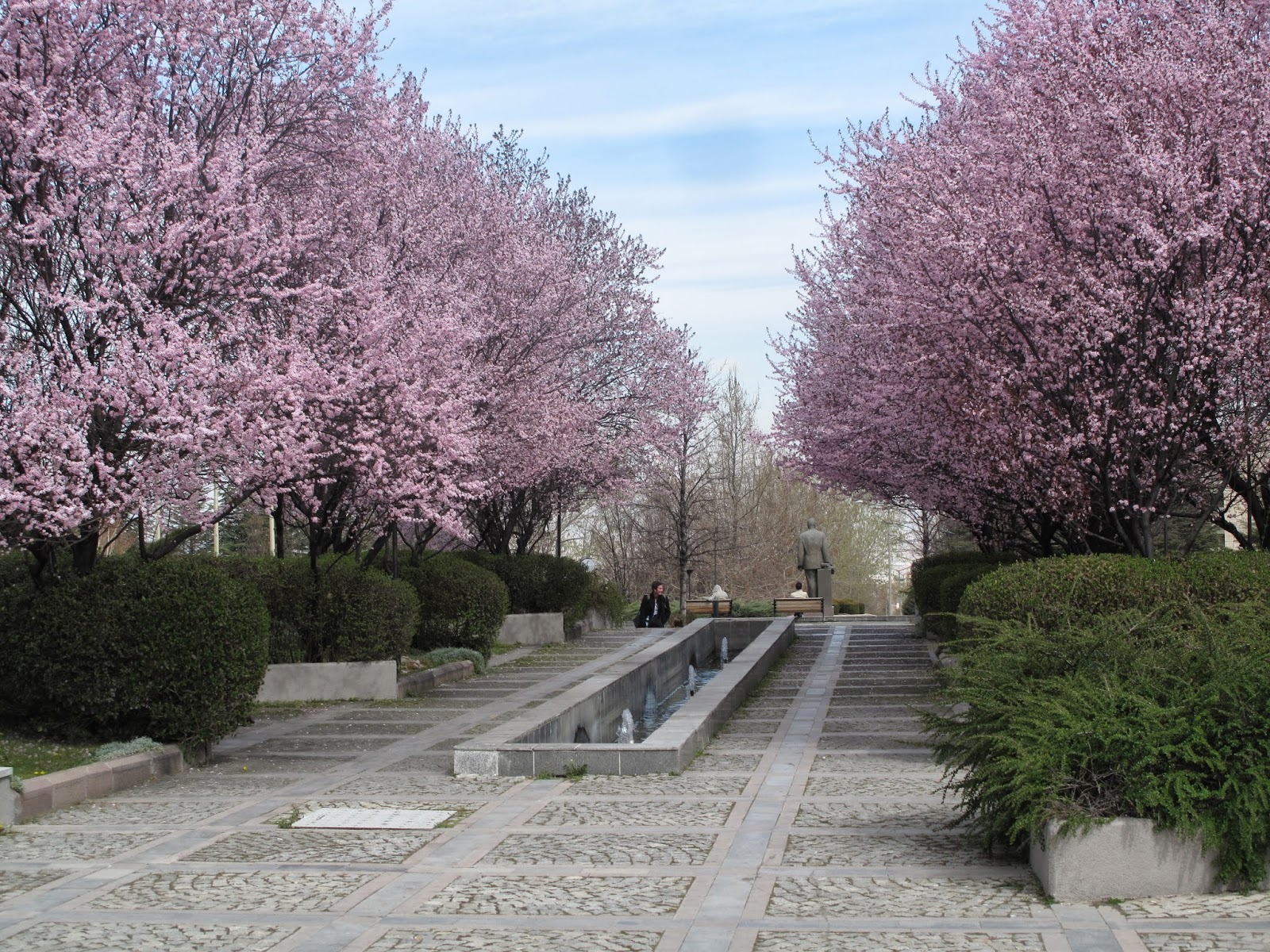Yesterday
I drove north from Middle East Technical University to the garden stores that cluster not far from the huge
Karşıyaka cemetery. I had killed the very nice boxwood (“şimşir”) on the
terrace outside my office – I had failed to water it at some crucial time this
summer, although I can’t reconstruct how this could have happened – so I was in
search of a replacement. As I headed
north, I wondered, could I see the Ak Saray (“White Palace”), the colossal,
extravagant palace built by Recep Tayyip Erdoğan, formerly prime minister now
president, in the Atatürk Orman Ciftliği (AOÇ), the farmland given to the
nation by Atatürk, land officially protected in 1992 from new construction? Yes, I could!
There it was, dominating a distant hilltop.

Things have changed in the AOÇ. I didn’t go there often, but it was always
there as long as I have been in Ankara, a rustic park-cum-farm, with its dairy
production (milk, yogurt, butter, important in the years before Pınar and other
companies standardized and expanded this market), a zoo, snack bars, a beer
factory, a small railway station, a garden shop, and a wonderful restaurant,
the Merkez. Atatürk himself had dined here; the restaurant offered postcard
photos of him, İsmet İnönü, and other dignitaries as tokens of that venerable
past. The building itself was plain, but
in summertime, I loved having dinner in the garden amidst the trees.

It was a glorious experience, relaxing yet
dignified. The menu offered Chicken Kievski and Beef Stroganoff, staples of
those old Republican restaurants founded in the 1920s and 1930s by White
Russian emigrés. Such restaurants are
all too few in Ankara today.
The restaurant closed in 2013, allegedly
because its rent was not paid.
Across
the street was a garden shop, where I bought the now deceased boxwood and two
rose bushes that continue to thrive on the balcony at home. I imagine the garden shop has closed, too,
the land on which both the garden shop and the restaurant stood now occupied by
a portion of the new palace. I didn’t
have the heart to drive over there to check.
Who knows, I might have been stopped on the way by security guards, or
not recognized where I was, had I even reached the spot.
The palace was to have been grandly opened
this past October 29, Republic Day, the national holiday. A few days earlier, though, flooding in a
mine near Karaman trapped 18 miners.
They have yet to be rescued. The
country was reminded of the disastrous accident at a coal mine near Soma last
May, which claimed the lives of 301
miners. The Republic Day reception at
the palace was cancelled, in recognition of this new tragedy. How grossly indecent, many thought, to call attention
to the vast palace, costing some $350 million, with its 1000 rooms, its tunnels
and super secure bunkers when safety standards at mines, indeed at industrial
and construction sites of all sorts, desperately need upgrading and strict
enforcement.

































